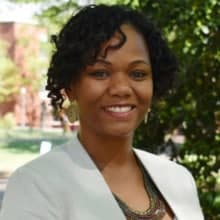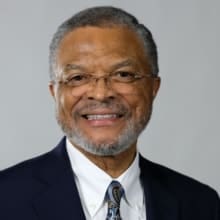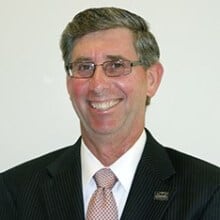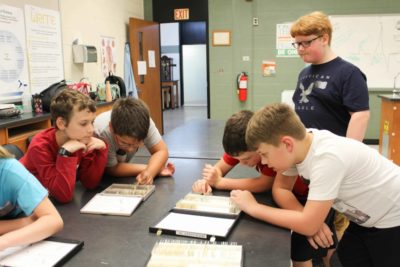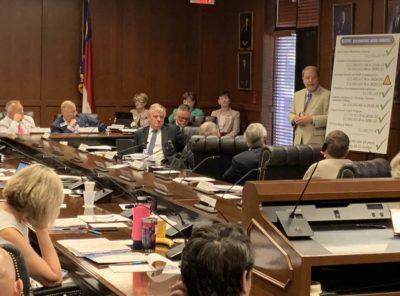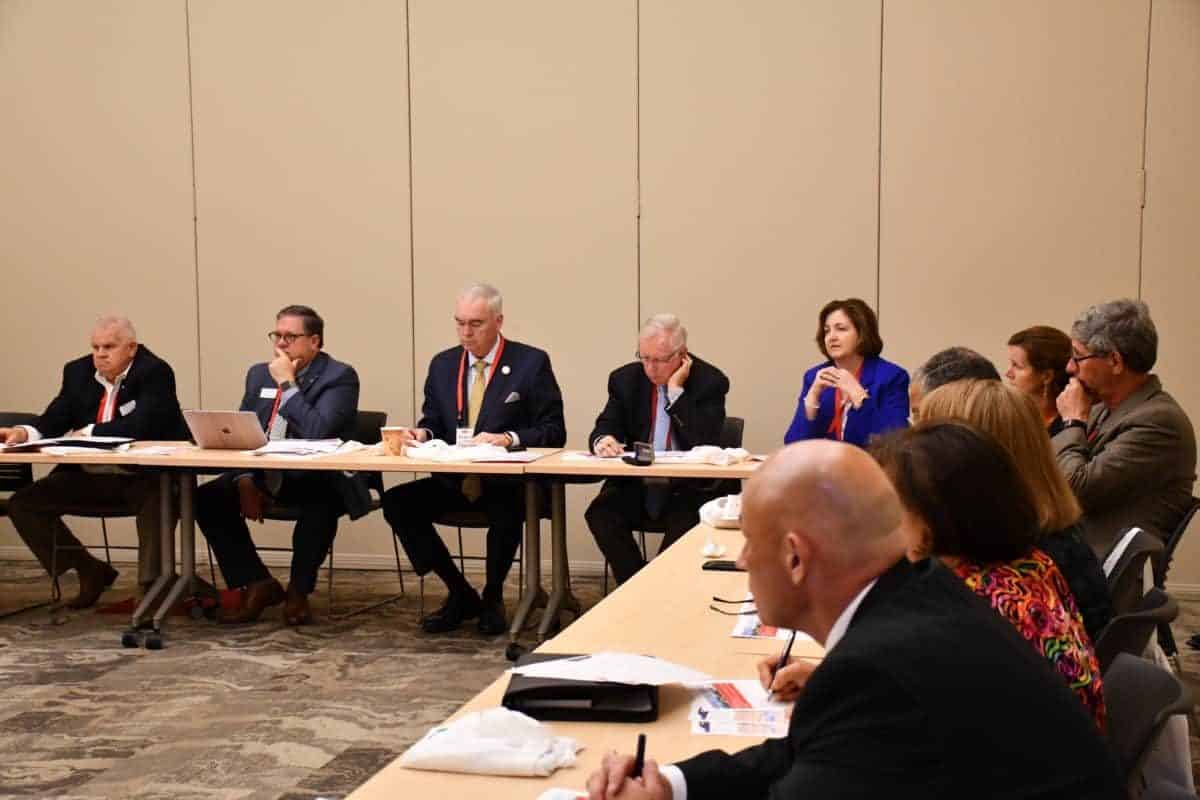
The Belk Center’s first Presidents’ Academy and Statewide Leadership Conference (SLC) was held on Thursday, May 23, 2019 at the Guilford Technical Community College’s Conference Center in Colfax, North Carolina. The conference represented a joint effort between NC State’s Belk Center for Community College Leadership and Research, the North Carolina Association of Community College Presidents, and the North Carolina Community College System, with support from the College Excellence Program at the Aspen Institute and Achieving the Dream. The conference focused on the critical role North Carolina’s community colleges and leaders play in creating a “grow our own” workforce strategy to fuel the state’s expanding high-skills economy and accelerate economic mobility for more North Carolinians.
The event celebrated the largest number of community college presidents joining together in person with 76 presidents and trustees representing North Carolina’s 58 community colleges. MC Belk Pilon joined others in kicking off a day filled with presentations and work sessions where attendees discussed the challenges and opportunities for improving college enrollment, student persistence, and credential completion aligned with labor market demand, especially for those who traditionally have been underserved. A common takeaway was the emphasis and promise of engaging in an ongoing collaborative approach to address challenges, while using data to inform solutions.
To reflect on the day, the Belk Center invited Alamance Community College President, Dr. Algie Gatewood, and Alamance’s Board of Trustees Chairperson, William Gomory, to provide their feedback on the lasting impression from the conference.
What do you believe is the role of community colleges in boosting social mobility?
One of the most important variables in social mobility is economic status. The community college, as part of its mission, addresses this from a variety of points, ranging from literacy, to developmental studies, to career technical education, to university-level coursework, to career. With that said, simply making people aware of opportunities available through community colleges does not get the job done. We must get students enrolled, keep them enrolled, and support them through completion.
We’ve all heard that education is the “great equalizer,” and this is truer with community colleges than all other higher education entities — and it is becoming even more the case as community colleges are serving disproportionately more underrepresented students, including students of color, economically disenfranchised students, first generation college students, disabled students, etc. There is a direct correlation between social mobility and economic success.
Training students for skilled careers not only builds the economy, but also improves the lives of students and their families, saving them from being unemployed, underemployed, or unemployable. Community colleges provide not only affordable access to opportunities, but must also have in place support systems to ensure that students succeed both academically and professionally. This underpins, more than anything else we know, our country’s economy. Nothing is closer to the workforce than the community college; and, with almost 70% of all jobs requiring education beyond high school, closing the skills gap should be a national imperative.
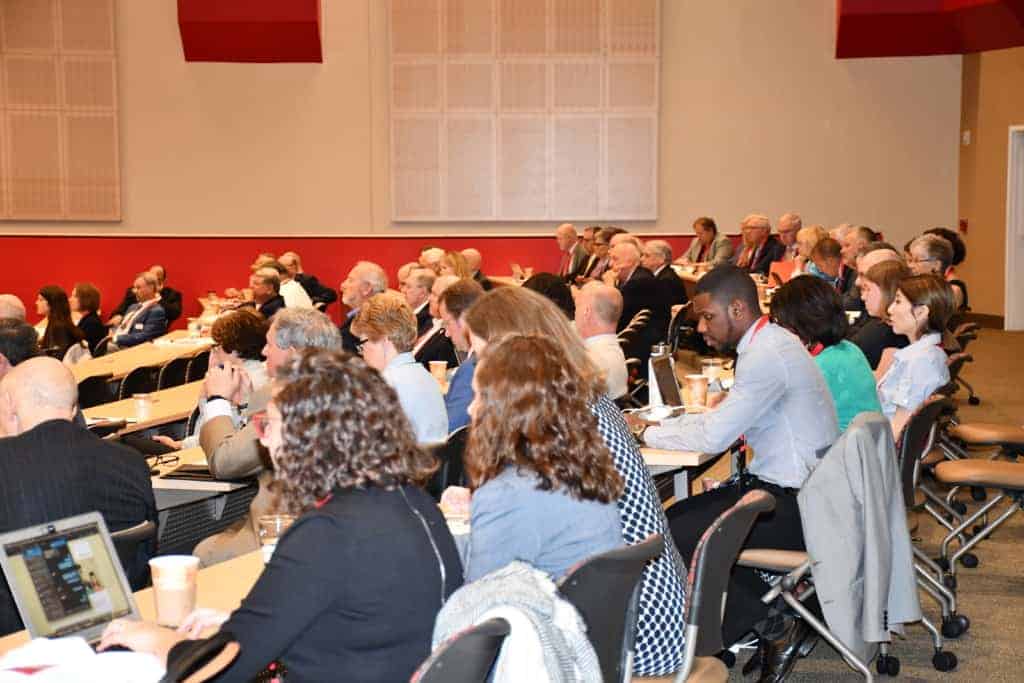
How did the SLC create a sense of urgency around the work of myFutureNC and the goal of education attainment?
The SLC was an excellent way to reinforce the sense of urgency that we have been feeling that if North Carolina is going to be economically competitive, we must address the skills gap. We cannot break the cycle of poverty until education and training become an inherited value. Community colleges promote education as an inherited value, though the belief gap can only truly be changed by helping underrepresented students achieve, thus creating examples so they can see others like them in skilled careers. This also involves raising the expectations of families, students, counselors, teachers, and leaders about what is achievable through community college. Ultimately, the aspirational goal of myFutureNC has to become a realization, and community colleges are uniquely positioned to lead developments with post-secondary institutions, business and industry, and public schools. Notwithstanding, in order for the community colleges to carry out the tasks required to reach the overarching goal for the state, we would be derelict if we did not say that realizing this goal requires not just a realignment of some resources, but additional resources that can provide stronger, targeted wraparound support for students, especially those who are underserved.
How does the data presented at the SLC influence your work?
The data presented shows there is a clear attainment gap for our Hispanic and African American students, as their retention and completion rates are consistently lower than those of our white students; however, the data show improvements across all student demographics are warranted. Forty-three percent of North Carolina students are not meeting college-ready standards. Specifically, 58% of Hispanic and 66% of Black students are not college-ready. This is unacceptable. Looking at the overall data for the whole system compels us at the college level to disaggregate our own data to see if it matches up with the system and to determine what we need to do to address the gaps at our own institution.
We must implement programs and services to address these gaps, and continuously monitor and make adjustments to ensure we move all populations forward. We see gaps in skills, attainment, and equity, which means we have to apply different resources and different support systems to address these differing situations, and we must be more strategic about it. The employees of the college should reflect the population of the student body and the college’s service areas — in other words, we need to hire more people who look like our students and who have experiences like our students. In the absence of being able to fully realize that goal, at the very least we must make sure to put in front of our students successful people from business, industry, and further higher education that reflect that diversity. If we work collectively as a state while we address these gaps on our individual campuses, it moves everything — state, regions, and local — forward.
From another angle, the data on summer melt shows a clear and immediate opportunity. If almost a quarter of students who indicate postsecondary intent while in high school do not ultimately enroll, that’s low-hanging fruit. We must capture them early, as it is much harder to get students back on the path to education if they have had time to get into a rut. Obviously, there are numerous other opportunities here, but this one is so glaring to us that it seemed worthy of special note.
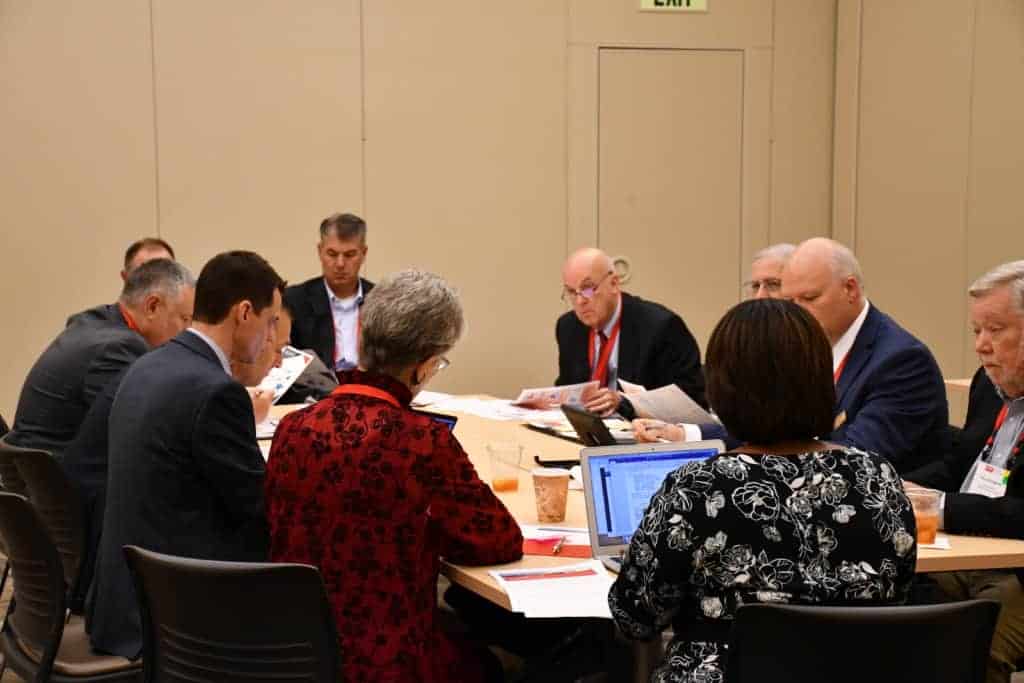
After conversations with community college presidents and trustees within your region, what partnerships emerge as critical to increasing education attainment and social mobility?
Community colleges in the state leverage partnerships with business and industry and local school systems to promote student success, but we need to further consider how we can scale the most effective partnerships to more regional approaches. We should also be more proactive about sharing best practices and those that are ineffective so we can steer our resources where we get the best return on investment. As Dr. Michael Walden, a North Carolina economist, has suggested, labor markets don’t follow county lines and business and industry look at availability outside of counties.
In other words, they take a regional approach. They are less concerned about where their workers come from, and more concerned about getting trained workers. We have to be better about seeing what we do and practicing what we do through a regional lens as opposed to county and service areas. We often look at things at either a state or local level, but more discussion needs to emerge about how, as a region, we can increase the yield of underrepresented students achieving success.
What action steps for Alamance Community College did this conference inspire?
First, to develop an action plan to increase diversity among faculty and staff so they can serve as role models for traditionally underserved and underrepresented populations. Additionally, we should seek external funding, such as grants, to support student success initiatives and wraparound services to increase academic achievement. Over and above that, we need to review our policies to see how they might drive programs and services and resources to better address the needs of the student population. We are also exploring funding strategies for the following:
- Getting career coaches into each of our high schools
- The tools and equipment necessary to properly train a 21st century workforce
- New curriculum that better align with the needs of today’s industry
Furthermore, myFutureNC recognizes a growing concern — that we are forgetting about the adult population ages 25 to 44. It is imperative to ensure this population has skilled training to address both the void left by an aging, retiring workforce and the swiftly increasing business and industry need for highly skilled workers. Ultimately, the success of our communities, our regions, and our state depends, to a large extent, on the success of community colleges in enrolling, retaining, and graduating students with the skills to work in the 21st century economy.
Conclusion
In early September, the Belk Center will host another series of symposia for community college presidents to build on the conversations at the Statewide Leadership Conference and extend their renewed sense of urgency into action. The symposia will address topics that include aligning academic programs to employment opportunities offering living wages, credential attainment and labor market outcomes, and positioning colleges to address future employment projections.
Dr. Karen Stout, President and CEO of Achieving the Dream and Dr. Mary Rittling, Belk Center Professor of Practice, will deliver presentations that reinforce data and regional labor market information delivered in the May 2019 Statewide Leadership Conference and begin preparing presidents to move to action based upon data. The intent of these symposia is to take a deeper look at institutional and labor market data and develop presidential leadership action plans that address emerging labor market needs and enhance student outcomes. Stay tuned for more information about this event.

